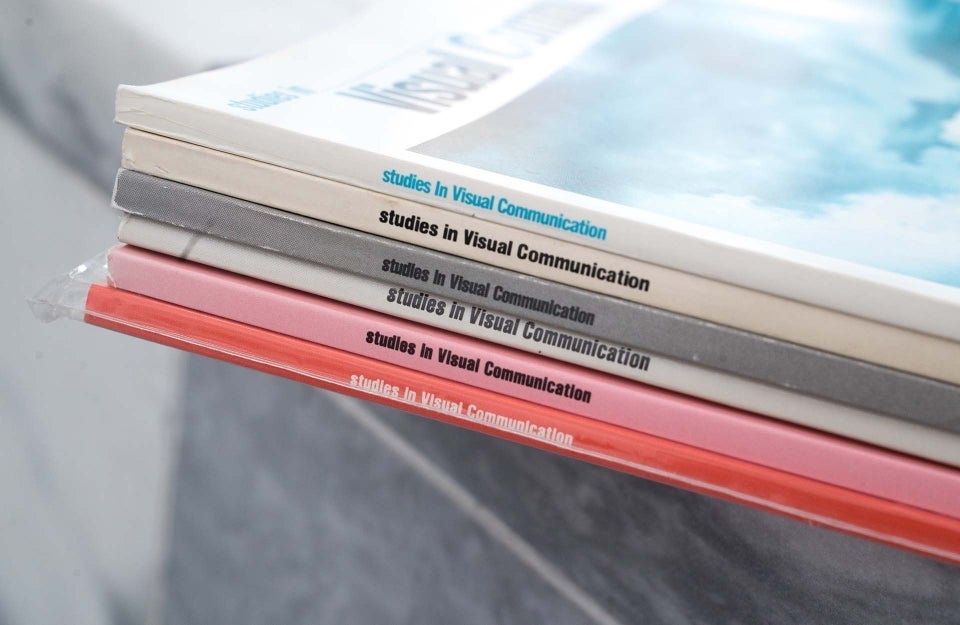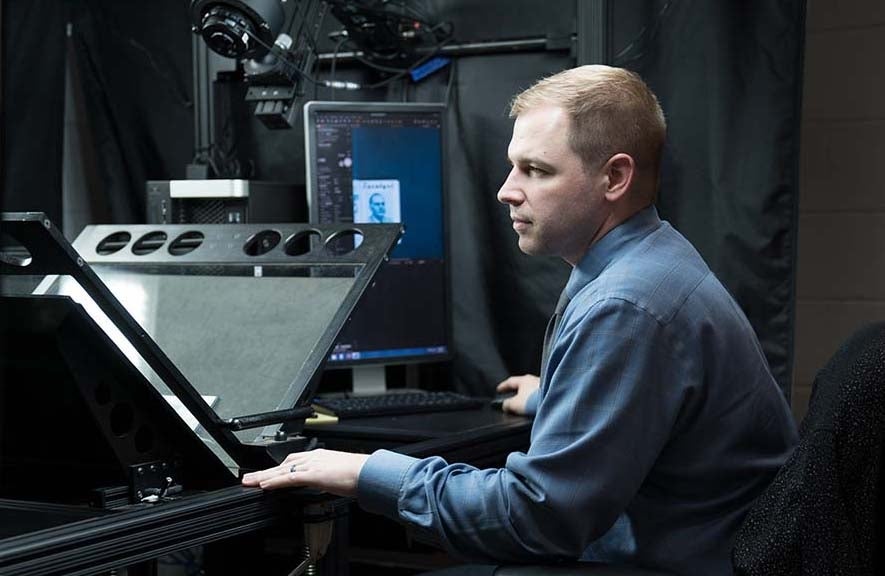Studies in Visual Communication, a Pioneering Journal Published 1974-1985, Now Available Online
A number of the works published in the journal became foundational texts in visual studies.

Margaret Mead. Howard Becker. Sol Worth. Erving Goffman.
They are just a few of the influential scholars whose work was published in Studies in Visual Communication (SVC). The journal, originally named Studies in the Anthropology of Visual Communication (SAVICOMM), was published by the Annenberg School from 1974 until 1985.
For 40 years, it was available only to scholars through hardbound archives. But thanks to a recently completed digitization process, SVC is now publicly available online.
SVC signaled a new focus on scholarly work in visual media and communication. A number of the works published in the journal went on to become foundational texts in visual studies, including Howard Becker’s “Photography and Sociology” and Jay Ruby’s “Is Ethnographic Film a Filmic Ethnography?”

Former Annenberg professor Sol Worth was the first editor of SAVICOMM, which was funded by the American Anthropological Association. Before joining the Annenberg faculty in 1964, Worth had a successful photography and film career. He brought this experience into his academic work, and his emphasis on visual media production is still a strong part of visual studies courses at Annenberg.
Worth is perhaps best known for Through Navaho Eyes: An Exploration in Film Communication and Anthropology (Indiana University Press, 1972), which he co-authored with anthropologist John Adair. (A full collection of his work, The Complete Sol Worth, was published in 2013 by Larry Gross and Jay Ruby.)
When Worth passed away in 1977, Gross and Ruby, both members of the SAVICOMM editorial board, took over as co-editors of the journal.
Gross, currently a professor at the Annenberg School at USC, taught at the Annenberg School at Penn from 1968 until 2003, where he eventually was Sol Worth Professor and Deputy Dean. His areas of specialty include media and culture, art and communication, visual communication, and media portrayals of minorities, and he is considered a founder of the field of gay and lesbian studies.
Ruby is a professor emeritus of anthropology at Temple University. His academic interests include archaeology, music criticism and journalism, and ethnography of visual culture.

In 1980, the Annenberg School began funding SAVICOMM, and the name was changed to SVC. Under its new name, and thanks to increased funding, the journal expanded from two to four issues each year and included more images and photography in each issue. Tobia Worth, a longtime editor at McGraw-Hill and Sol Worth’s wife, joined the team as full-time managing editor. Gross and Ruby also hired a designer to lay out each page.
“Every issue included an expansive and careful use of visual images, especially for that time period,” said Gross. “We were committed to careful design, so we didn’t use a template. And we valued high quality printing. We actually rejected the first issue because the image quality wasn’t good enough. We made them reprint it.”
Gross and Ruby wanted to maintain the journal’s multi- and inter-disciplinary focus on visual communication, so they assembled an editorial board of leading scholars from anthropology, history, communication, psychology, film studies, art history, and sociology. Gross credits the board with bringing credibility to the journal in its earlier years, allowing it to attract more impressive scholarship than a young journal might typically publish.
And it all paid off, as SVC won awards for its visual achievements. In 1982, it earned the National Composition Association Award for Typographic Excellence, and in 1984, it received the American Institute of Graphic Arts Certificate of Excellence.

But today’s scholars are more and more dependent on Google searches for their research, so the lack of an online presence was keeping the journal’s work from being widely available. This was a problem Annenberg Librarian Sharon Black aimed to correct.
“I think SVC is a stunning journal, both visually and intellectually,” said Black. “And it’s one of the flagship publications of the Annenberg School. It needed to be more available to scholars, and the way to do that was through digitization.”
Gross and Ruby agreed. The former editors had long hoped to see SVC digitized while maintaining the high visual standards of the print version.
Black reached out to Mitch Fraas, a preservation specialist at Penn Libraries, to initiate the project. The first step was to locate copies of all 32 issues of the journal. Penn Libraries had all but one mysteriously missing issue. Luckily, Gross’s personal archives were able to supply it.

Under the direction of Mick Overgard, Penn Libraries’ digitization unit got to work. The issues were not simply put through a scanner, but rather photographed in high definition. Those photos were then subjected to a rigorous quality control process. Optical character recognition (OCR) software ensured that the printed text will be searchable.
The journal now lives within ScholarlyCommons, an open access archive of scholarship produced by Penn’s 12 schools. Around 2.5 million files are downloaded from ScholarlyCommons each year.
Penn Librarians Sarah Wipperman and Kenny Whitebloom worked with Black to decide how SVC should be presented in digital form. Each issue of the journal can be downloaded as a single PDF file, or individual articles can be downloaded on their own.
“Penn Libraries did it right,” Gross said, “The digital version of the journal is easy to use, the articles are easy to read, and the photos are clear. We spent a lot of time making sure that SVC was visually engaging and attractive, so I’m really delighted that the digital version maintains that aesthetic.”




